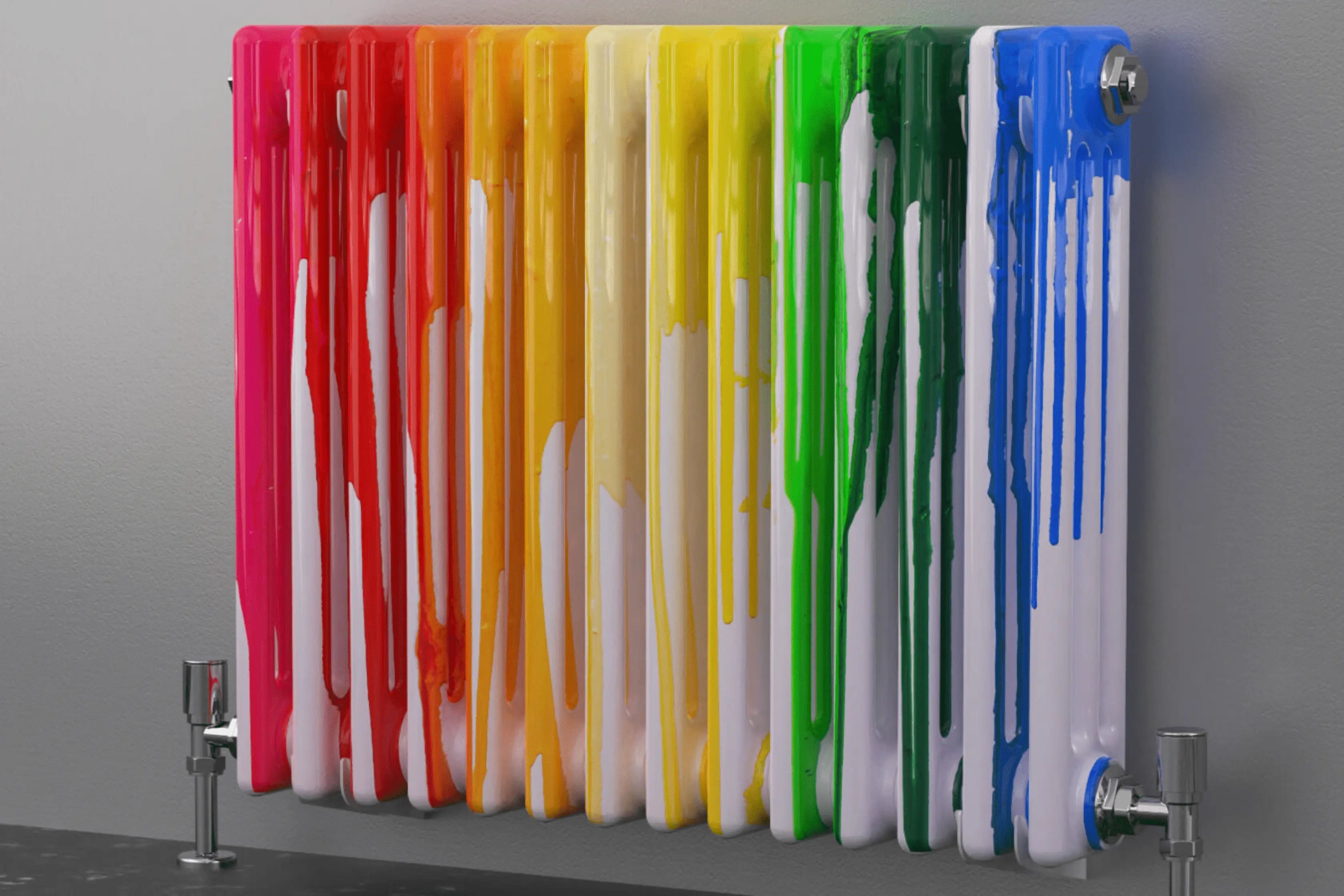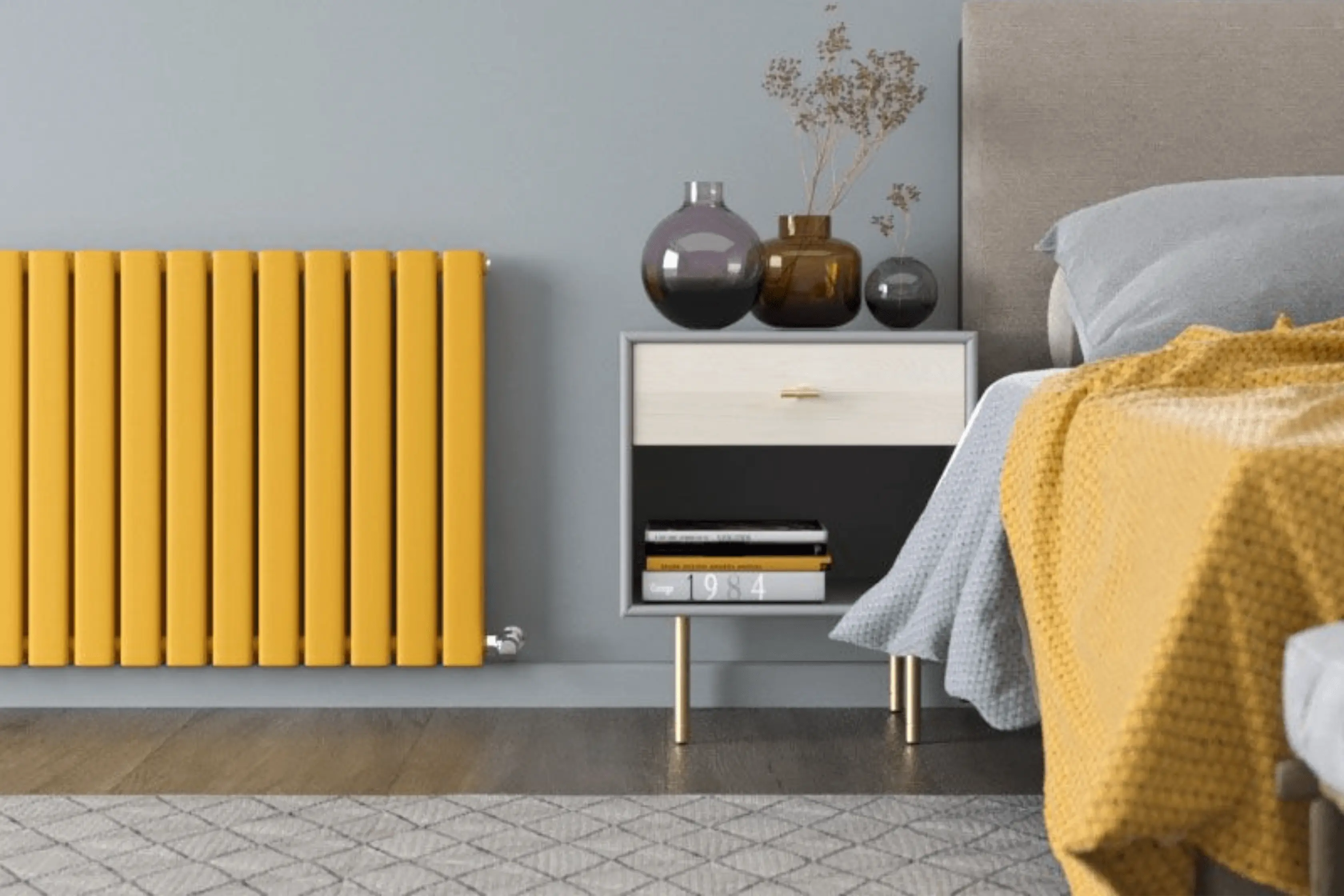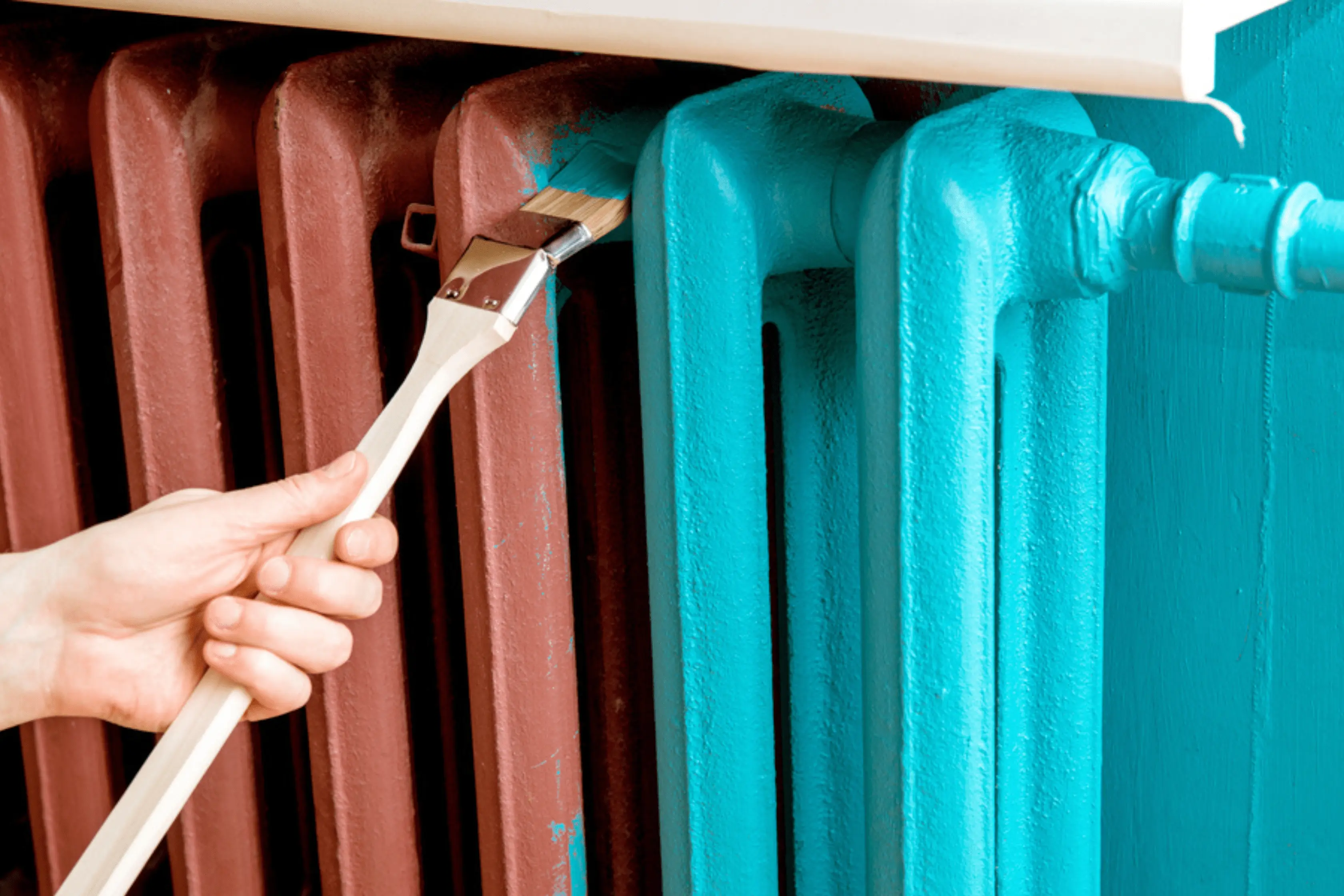Dramp, tired radiators that seem to be blending into the background of your interiors?
We get you, don’t settle for boring radiators!
Painting your radiators is a fun and cost-effective way to spruce up your home. And it’s not difficult at all to do this yourself. Read on…
Can You Paint A Radiator?
If you are wondering ‘can i paint a radiator?’ the simple answer is yes!
But before we get started on the types of paints you could use and how to do it, it’s important to know what the advantages and disadvantages to painting your radiator can be!
Advantages
- Cost effective way to freshen up your rooms look
- It’s an easy DIY job
- You can blend it into your new or current home interior easily
Disadvantages
- If done incorrectly it can look unprofessional
- You can't just use any paint, it has to be suitable for radiators

Types Of Radiator Paint Available To Use
Before you get the brush in your hand, it’s important to understand the types of radiator paint you can use on your radiator.
Here are 6 types of paint that can be used when painting a radiator and there look:
Silk Paint - This mid-sheen finish is designed for use on interior walls and ceilings.
Matt Paint - The 'flat' paint finish is the most popular choice for interior walls and ceilings. This ultra-matte sheen is also commonly used in specialty paints designed for exterior or interior applications, such as metal and masonry paints.
Soft Sheen Paint - This mid-sheen paint offers a softer, more velvety finish than silk, making it ideal for interior walls and ceilings.
Eggshell Paint - Eggshell paint provides a subtle sheen that is more durable than matte finishes. It is a versatile option for walls, wood, and metal surfaces.
Gloss Paint - This high-gloss finish is most commonly used to enhance the appearance of woodwork and metal surfaces.
Satin Paint - This mid-sheen finish is designed for use on both woodwork and metal surfaces and would commonly be the best choice for a radiator.

Step-By-Step Guide: How To Paint A Radiator
Step 1: Get The Equipment Together
Here’s what you’ll need before painting your radiators:
- Paint For Your Radiator
- Paintbrushes
- Painters Tape
- Protective Gloves And Goggles
- Cleaning Solution and Degreaser
- Primer
- Rags and paper towels
Step 2: Prepare Your Work Area
Protect the floor and surrounding surfaces by laying down lace drop cloths or plastic sheets to catch any paint drips or spills. Next, use painter's tape to cover any areas you don't want painted, such as valves or nearby walls.
Step 3: Clean The Radiator
Ensure the radiator is powered off and fully cooled before proceeding. Use a cloth or vacuum with a brush attachment to remove any loose dust, dirt, or debris.
If the radiator's surface is rough or has peeling paint, lightly sand it or use a wire brush to smooth out imperfections.
Then, thoroughly clean the radiator using a cleaning solution or degreaser to eliminate grease, grime, and residues.
Rinse with water and let it dry completely.
Step 4: Apply The Radiator Primer (If Need)
Before painting radiators, check the manufacturer's instructions. Many radiator paints recommend applying a primer coat first. If the instructions call for primer, follow the manufacturer's application guidelines and allow the primer to dry completely before continuing.
Step 5: Paint The Radiator
Stir the radiator paint thoroughly to ensure proper mixing. Start by using a small brush to paint the hard-to-reach areas and intricate details of the radiator.
Then, use a larger brush to paint the broader surfaces, working in smooth and even strokes. Apply the paint in thin coats, allowing each coat to dry completely before adding the next. Multiple thin coats will provide better coverage and durability compared to one thick coat. Immediately smooth out any drips or runs with the brush.
Finally, follow the paint manufacturer's instructions regarding the recommended drying time between coats.
Step 6: Complete The Final Radiator Touches
After the final coat of paint has dried, thoroughly inspect the radiator. Identify any areas that require touch-ups or have uneven paint coverage.
If necessary, carefully apply additional paint to those spots to achieve a uniform, professional-looking finish
Step 7: Clean Up
Clean your painting supplies as directed by the paint manufacturer. Carefully remove drop cloths or plastic sheets, checking for and addressing any lingering paint drips or spills.
Properly dispose of used materials and leftover paint in accordance with local regulations.

Match Your Painted Radiator
Now you have painted your radiator, why not complete the look with matching pipes, collars and valves!
If painting a radiator is not quite your thing why not try looking into our coloured radiators range with a variety of colours from baby pink to a stylish smooth navy blue there are a variety of options.
FAQ’s
Can You Put The Heating On After Painting?
Yes, paint manufacturers typically recommend waiting 24 to 48 hours after the final coat before switching radiators back on.
What Paint Can I Use On Radiators?
Satinwood paint is the ideal choice for painting a radiator. Its smooth, satin-like finish holds up well to the constant temperature fluctuations.
Can You Paint Radiator Pipes?
Yes, you absolutely can paint your radiator pipes, it’s actually a lot simpler than you may have thought! Take a read of our how to paint radiator pipes blog for more.
Can You Use Metal Paint On Radiators
Since radiators are not made of the typical metal materials, we advise against using metal-based paints on them.
Can You Spray Paint A Radiator
Yes you can, in fact spray painting a radiator is a quick and convenient way to achieve even, streak-free coverage.
Can You Paint Electric Radiators
No! You must avoid painting electric radiators, as the paint can disrupt the electronic controls and potentially decrease the unit's heat output.
Can You Use Normal Paint On Radiators
It is generally recommended to avoid using emulsion paint when painting radiators. So when asking yourself can you paint radiators with normal paint or can you paint radiators with gloss we recommend it’s something you avoid.
Can I Paint Radiator Covers?
Yes, you can still paint your radiator covers if you are looking to totally coordinate your room space.
Can You Paint A Radiator With Wall Paint?
Yes, while lower-quality paints may chip and peel over time, high-quality emulsion paints are suitable for painting radiators. However, it's important to apply a clear radiator overcoat after the emulsion paint to ensure a durable, long-lasting finish.
Can You Paint A Radiator With Emulsion
While lower-cost paints may chip and peel over time, high-quality emulsion paints are suitable for painting radiators.
However, if you are wondering if you can you paint radiators with emulsion we suggest it’s important to apply a clear radiator overcoat after the emulsion paint to ensure a durable, long-lasting finish.
Can You Paint Radiators With Satinwood?
Are you wondering, ‘can I paint a radiator with satinwood?’ Yes, you certainly can. Satinwood paint is an excellent choice for painting radiators, as it provides a smooth, attractive finish that can withstand the constant fluctuations in temperature.
Can Eggshell Paint Be Used On Radiators?
YES! Eggshell paint is another type of finish formulated for radiators, designed to resist moisture, staining, and wear so would be a great choice.
Can I Put Heating On After Painting Radiator?
Yes, but we recommend first waiting approximately 24 hours to let your paint dry fully.
Can I Paint Copper Radiator Pipes
You can yes, it’s something you can do, we don't recommend it as it’s a better idea to hide them through pipe covers and collars.
Can You Use Frenchic Paint On Radiators
Frenchic offers a wide range of colours and finishes, giving you the freedom to paint your radiators however you desire.























